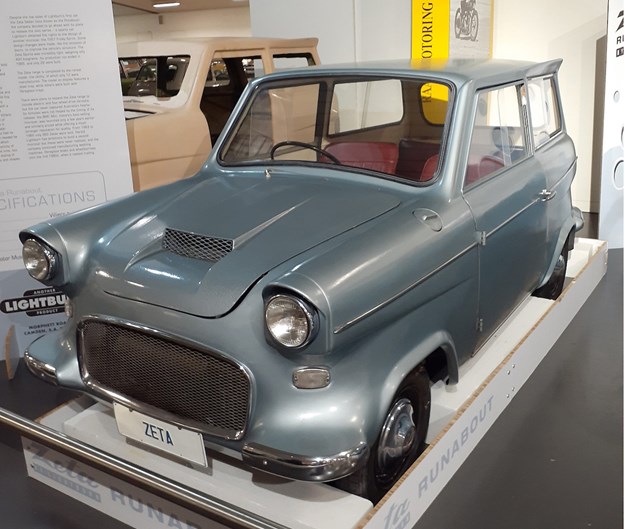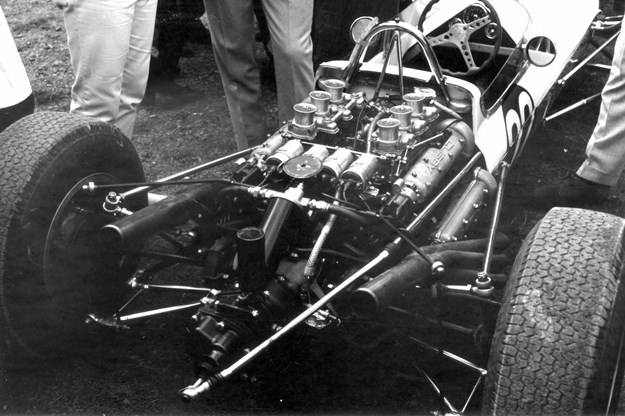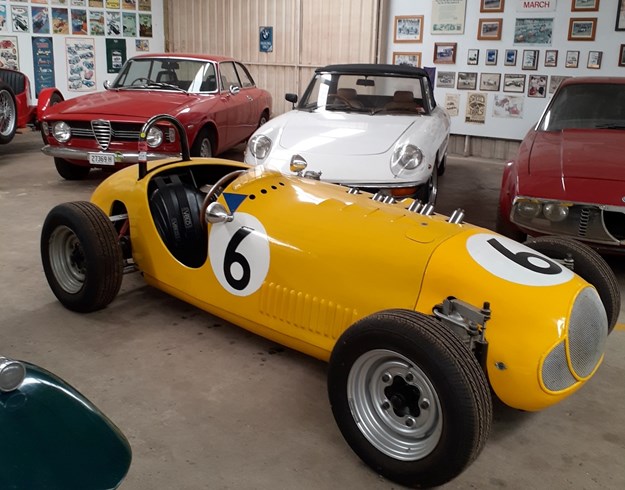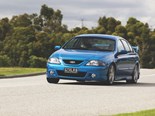Eccentricity rules, ok? - Blackbourn
It seems personal qualities like common sense, rationality and showing restraint can be overrated at times

|
|
Zeta's cute ute
|
Orthodoxy’s beigeness has never pressed my buttons. Give me the colour and movement around eccentric, quirky and crazy-brave characters every time. Consequently as far back as Don Dunstan’s pink-shorts days I’ve had my eye on Adelaide.
Kym Bonython also got my attention as a paid-up member of the Adelaide aristocracy and fine-arts patron who enjoyed pastimes straight from the blue-collar playbook as promoter and competitor at the Rowley Park Speedway and occasional speedboat racer. To its credit Adelaide has also produced a number of technically creative individuals whose approaches to life and business were not quite orthodox.
Take Harold Lightburn who traded a promising career as a prize fighter for an engineering apprenticeship. Then in 1945 after being bitten severely by the manufacturing-bug (back when Australians made stuff), he took the reins of his father’s small general engineering business. S
oon a new factory was established on land at Camden (coincidentally it was previously the site of a speedway, a predecessor of Bonython’s Rowley Park track). By 1950 business was booming. Its 500 workers punched out a stunning range of products including washing machines, range-hoods, spin-driers, concrete mixers, wheelbarrows, hydraulic jacks, trailers, boats and for good measure – go-karts and power tools!
But Harold couldn’t leave it there. With Holden and Chrysler making cars in Adelaide, he decided during the 1950s that he too would make cars. What could possibly go wrong? However, after various setbacks his competent but quirky little two-stroke-powered, fibreglass-bodied Zeta took until 1963 to hit the showrooms. Perhaps the greatest challenge to Zeta’s success was its release timing. By 1963 small-car buyers, for a few extra pounds, could have a Morris Mini. With fewer than 400 Zetas built it was finita la musica!

However, the never-say-die Harold put the ill-fated Zeta episode behind him and the company went on to trade profitably into the mid-1980s.
Now to Eldred Norman, a law-degree dropout and self-taught engineer who came to early prominence racing a car he built of leftover parts from WWII military-vehicles, powered by two side-valve Ford V8 engines. A handful to drive, with a poor reliability record, it nevertheless held the lead in the 1951 Australian Grand Prix – before suffering another DNF …
Later his boast that his Norman sliding-vane superchargers would launch HR Holdens to 100mph (160km/h) in 14 seconds was something he would enthusiastically demonstrate to sometimes terrified customers on public roads. Apparently he also had a history of driving various unregistered racing cars between his city workshop and his Hope Valley home, all the while getting a buzz from outrunning the cops.
My favourite Norman creation is his ‘1955 Zephyr Special’ I first encountered as a kid at Phillip Island, by then campaigned by Keith Rilstone and memorable for the howl from its six stub-exhausts. Its supercharged Ford Zephyr engine and radical chassis enabled it to keep well-driven examples of Cooper-Climax open-wheelers honest. Everything, I repeat everything, fore and aft and amidships is slung from its ‘backbone’ consisting of the engine and rigidly attached 150mm diameter steel torque-tube extension. The remarkable Zephyr Special survives as part of the Graeme and Robyn Snape collection.
I can’t leave Norman without mentioning his alleged use of bursts of machine-gun fire to consolidate the soil around freshly installed fence posts. As you do …

Clisby V6 powered Elfin Mono.
Finally, another self-taught engineer – Harold Clisby. Despite leaving school at Year 7 the eccentric young Harold had built a small motorcycle-engine powered car for commuting to work by age 16 and continued to successfully apply his mechanical creativity to myriad amazing projects. After a stint at Holden’s during WWII, the adult Harold set up Clisby Industries to successfully produce air compressors and subsequently lathes – while taking time out to indulge his interest in motorsport. He was instrumental in creating the Collingrove Hillclimb that opened in 1952 where he competed in his own hillclimbing special.

Clisby even cast the carburettors.
Clisby created headlines after a 1960 Europe visit when he decided to build a competitive Formula 1 engine. Yes, an F1 engine. Sadly by the time his magnificent 1.5-litre, V6, quad-cam engine finally hit the track in 1965 the 1.5-litre Formula 1 era was ending. Anyway, by then the ever-restless Harold had moved on to designing hovercraft, steam engines and model railways …
Interestingly the alloy-casting skills gained on his F1 project led to Clisby providing the cylinder heads for the V8 Repco-Brabham race engines that won manufacturers’ and drivers’ championships for Jack Brabham and Denny Hulme.
Unique Cars magazine Value Guides
Sell your car for free right here
Get your monthly fix of news, reviews and stories on the greatest cars and minds in the automotive world.
Subscribe

.jpg)












